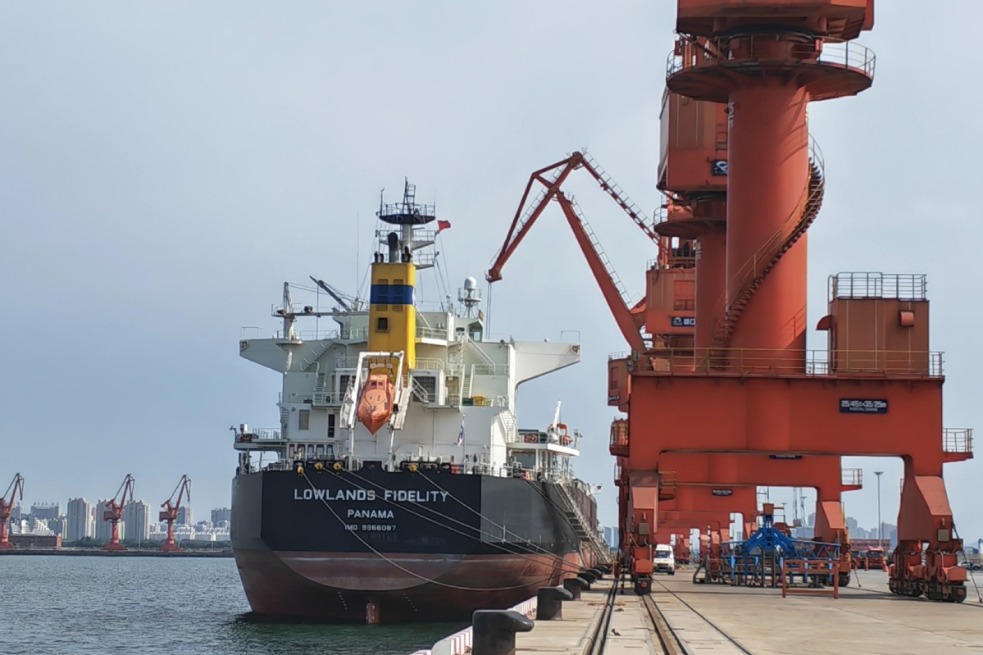Despite truce, US should be wary of damage


At the meeting between President Xi Jinping and US President Donald Trump on the sidelines of the just concluded G20 Summit in Osaka, the two sides agreed to restart the trade talks. While the trade disputes are slowing China's growth, the US economy also is beginning to suffer collateral damage.
Furthermore, Trump said US companies can supply components to Chinese telecommunications equipment provider Huawei, which the US Department of Commerce blacklisted in May and which Washington has tried to lobby other countries against.
Nevertheless, the negotiators face challenging obstacles despite another temporary timeout. But what's the economic impact of the new trade truce?
The most recent US tariff hikes on $200 billion of Chinese goods is expected to penalize about 0.1 percent of China's GDP growth in the coming year. That is enough to create significant concern, but not enough to cause substantial damage-yet.
Even if the US were to impose 25 percent tariffs on all Chinese goods, the largest Chinese companies would likely adjust thanks to their focus on the domestic market.
The US economy is far from immune to trade-conflict damage. In fact, the trade tensions' negative impact is only beginning to be felt in the US.
In the US, the tariff increase from 10 percent to 25 percent on $200 billion of Chinese imports could directly penalize some 0.3 percent from growth in the coming year.
Typically, US companies that garner a significant share of their revenues from China will take the most severe hits. Trump wants China to buy "tremendous" amounts of farm goods, because the US farm sector has suffered the most from China's countermeasures, while the White House's $12 billion bailout package for farmers has failed to soften the blow.
In fact, the US administration has worked itself into a double-bind. If it piles up another bailout of $15 billion to $20 billion, it might prove too little too late in the farm sector, while other industries could demand similar packages.
The damage is spreading to advanced industries, too, which include semiconductor giants, such as Micron Tech and Texas Instruments (which get 40-60 percent of their revenues from China), other technology conglomerates, including Apple and TTM Technologies (about 20 percent), and consumer and auto companies, such as Nike and Cooper-Standard (10 percent to 20 percent).
The White House is pressuring US companies to move their supply chains away from China. And Apple reportedly is considering diversifying 15-30 percent of its capacity away from China. Yet such proposed moves would come with a huge cost.
None of the new country destinations can offer a high-level technology and logistics infrastructure that would be comparable to that in China.
So the costs of these companies will climb, which would damage their global competitiveness. Today China is the world's largest and most rapidly-growing market. If US companies reduce their presence in the country, they would take a cut in their most vital future source of income.
With continued trade tensions, the damage is spreading in the US economy. As the fiscal stimulus impact is fading, private investment is softening and uncertainty increasing. US economic growth is likely to remain below 2.5 percent in 2019 and decelerate to 1.8 percent in 2020.
As the impact of the US tax cuts and other one-time benefits will diminish, the US economy is likely to be more vulnerable to a recession risk, even a major market correction.
Worse, if the talks fail and the White House chooses to impose punitive tariffs on all Chinese goods, it would be harder for US companies to pass on the costs to consumers, which in turn would compromise these companies' competitiveness. As a result, US growth could plunge below 1 percent in 2020-the year of presidential election.
Of course, there is still a chance to salvage the US-China trade talks. That, however, would require a substantial reassessment of the US' stance and objectives. China will not sign a trade deal that is predicated on unilateral geopolitical objectives rather than economic realities.
The final outcome cannot be based on coercion. It must rely on a mutual effort at a sustained reconciliation that would reflect both countries' sovereign interests and the compelling long-term economic realities of the global economy.
The author is the founder of Difference Group and has served at India, China and America Institute (US), Shanghai Institutes for International Studies (China) and the EU Centre (Singapore). The views don't necessarily represent those of China Daily.
































